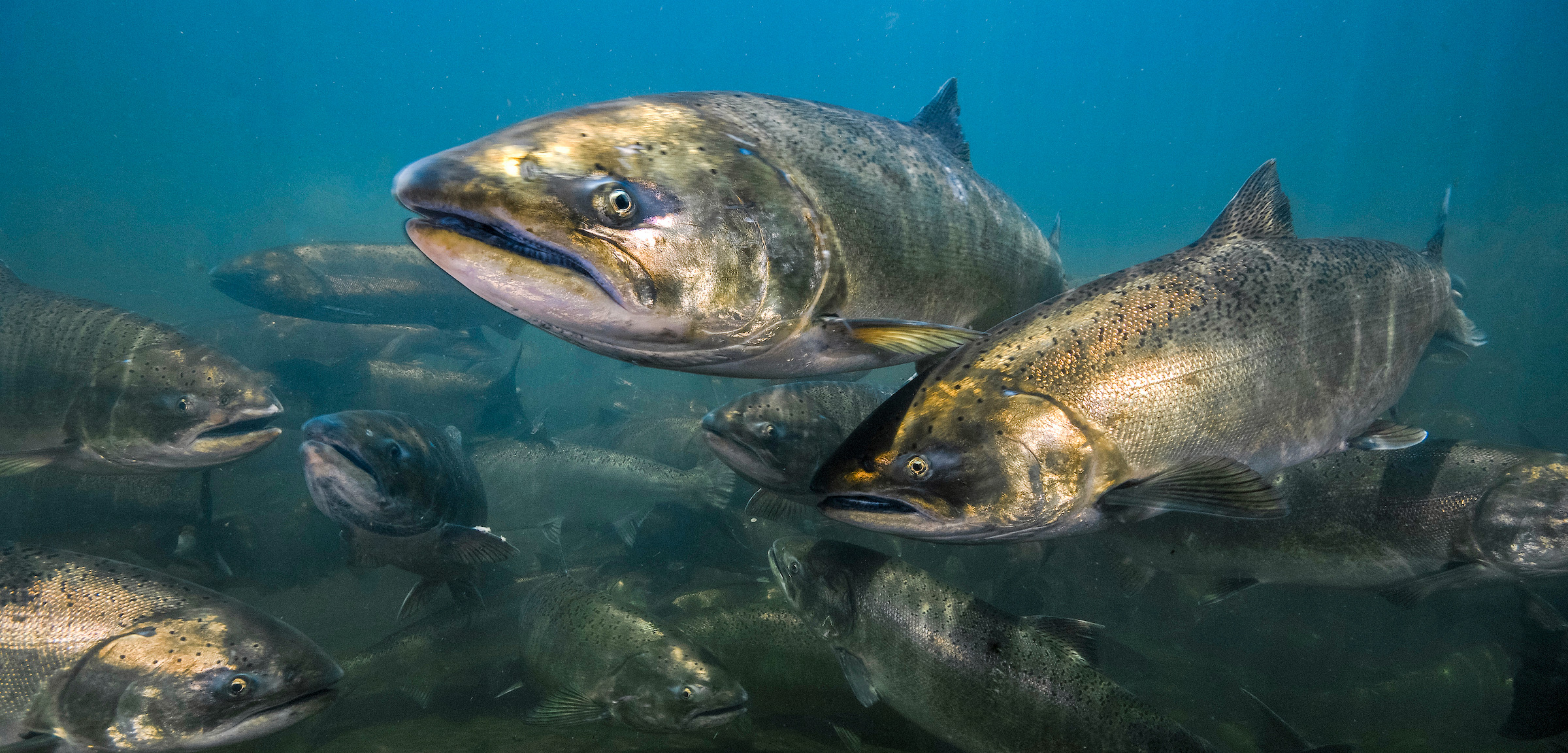Coming Home to the Klamath
A genetic discovery may help restore chinook salmon to reopening river habitats.
Article body copy
Four aging dams on the Klamath River are coming down. Their completion between 1921 and 1964 brought hydroelectric power to Northern California. It also blocked hundreds of kilometers of fish habitat, causing chinook salmon to effectively disappear from the upper river basin. But the removal of dams is no guarantee the fish will return, so a team of wildlife researchers hopes it can coax the fish to repopulate the river by exploiting a new discovery about salmon genetics.
The Klamath was once the third-largest salmon-producing river in the United States, and its fish are still prized by Indigenous tribes that live along its winding path. In the Klamath, as in many other rivers, chinook salmon come in two main types: spring-run and fall-run. Spring-run fish start their migration from the river’s estuary four to six months before their fall-run cousins, and their return spawning run takes them farther up the river. Over time, however, human activities including mining, agriculture, and dam construction all but swept spring-run fish from the upper Klamath. Today, only the fall run of chinook salmon is large enough to support fishing.
Though dam removal has yet to begin—that won’t come for at least another year—John Carlos Garza and Anne Beulke are already investigating how to replenish spring-run chinook in the upper reaches of the Klamath River Basin. Garza is a geneticist with the US National Oceanic and Atmospheric Administration’s Southwest Fisheries Science Center and a researcher at the University of California, Santa Cruz, where Beulke is pursuing doctoral studies. Their research was motivated by a mystery of salmon behavior.
People have long recognized spring- and fall-run patterns, but scientists couldn’t actually explain what caused this distinction. “We found these curious patterns again and again,” Garza says, “even though they were the same type of salmon.” Once they acquired the technology to quickly sequence fish DNA, however, the scientists started analyzing the genes of salmon that spawned at different times. “We found a single region in the genome that’s responsible for the difference between early- and late-migrating fish,” Garza says. This led them to wonder whether they could re-create the missing spring-run salmon by crossing fall-run salmon with those that have the early-migration gene.
Garza and Beulke are now preparing to apply their discovery. They plan to crossbreed and release hatchery-raised spring-run chinook from the nearby Trinity River with fall-run chinook from the Klamath. When the fish return to the hatchery once more to spawn, they’ll crossbreed them again with more fish from the Klamath. “With every generation, you’ll get fish with a higher percentage of their ancestry from the Klamath River,” he says.
Ideally, Garza and Beulke should begin their project this September to take advantage of the 2020 spawning season. Their work was scheduled to start in March, but stakeholder agencies have been slow to agree. The current pandemic may influence their schedule, too. “I can’t even get into the lab right now,” Beulke says.
Although other plans have proposed reintroducing spring-run fish from nearby rivers, Garza’s method has the advantage of preserving the evolutionary history of the Klamath River fish. During his analyses, Garza noticed that some fall-run salmon included genetic descendants of the Klamath’s earlier spring-run fish. Crossing spring- and fall-run fish from within the river, then, would enable new spring-run generations to also preserve the adaptive genetic patterns of their Klamath ancestors.
“At this point, I like Carlos’s approach,” says Kathleen O’Malley, a geneticist at Oregon State University. “It’s a great opportunity to test the connections between a genomic region and run timing. There are a lot of variables,” she adds, “but it’s certainly a worthwhile project. It may take more years than anticipated, though, to actually get enough data points.”
Garza is comfortable taking the long view. “This is a process that occurs naturally,” he says. “We’re just accelerating things. Within 10 years, we could have thriving spring-run chinook salmon populations.
“After all, the dams have been up for 100 years.”

